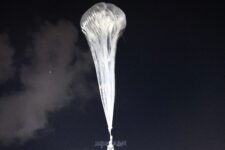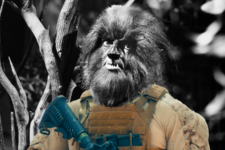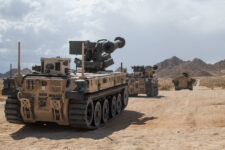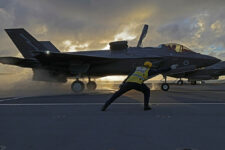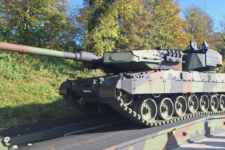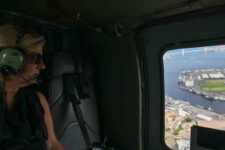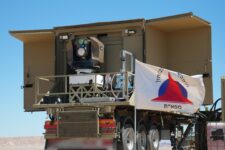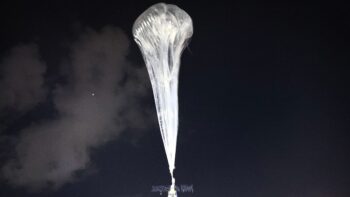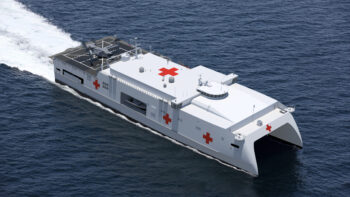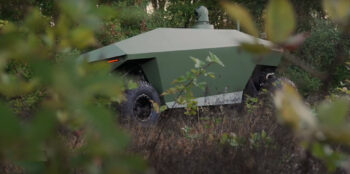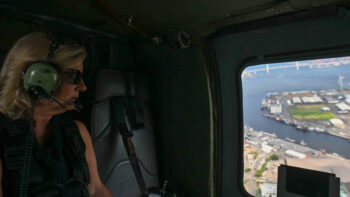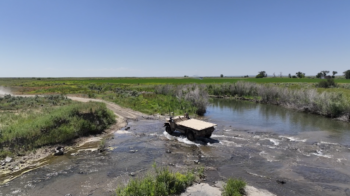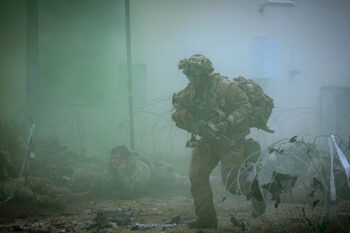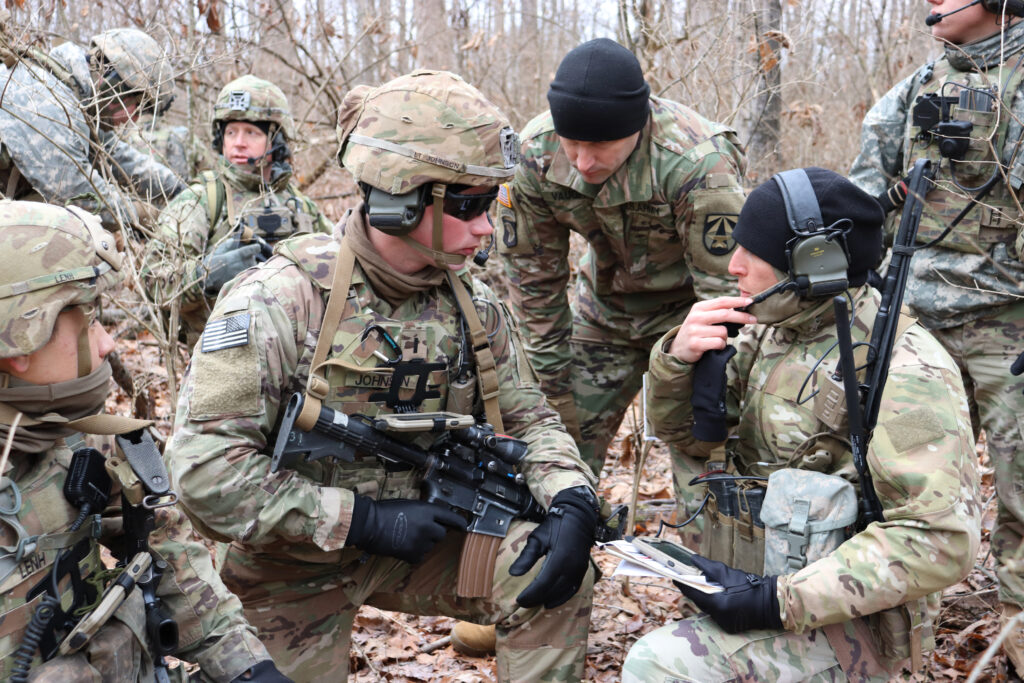
The 1st Battalion, 508th Parachute Infantry Regiment try out an early version of the Army’s Integrated Tactical Network (ITN) in wargames.
WASHINGTON: While 2020 disrupted testing, the Army’s next big upgrade to its Integrated Tactical Network, ITN Capability Set 21, remains on track to field to four brigades this year and five more in 2022, two generals confirmed this morning, speaking from the sidelines of a key test at Fort Bragg.
[Click here for our full coverage of AFCEA NOVA’s 2021 Army IT Days]

Maj. Gen. Peter Gallagher
“[We’re] right in the middle of the operational test” for CS21’s new handheld and backpack radios, said Maj. Gen. Peter Gallagher, the Network Cross Functional Team (CFT) director at Army Futures Command. Gallagher was calling in to an AFCEA NOVA conference alongside his counterpart for procurement, Brig. Gen. Robert Collins, the Program Executive Officer for Command, Control, & Communications – Tactical (PEO-C3T).
“Gen. Collins and I today are actually on the ground at Fort Bragg,” Gallagher said, where they joined soldiers of the famed 82nd Airborne Division in a field exercise simulating a “movement to contact” with an enemy force.
The Army issued an early version of CS21 to the 82nd’s 1st Brigade and had planned extensive field tests in 2020. But the Airborne is the Army’s global rapid-response force, and the 1st Brigade had two unscheduled deployments last year: one to the Mideast after US drones killed Iranian general Qassem Soleimani and sparked a regional crisis, the other to Washington, DC after police killed George Floyd and set of nationwide protests.
Those real-world crises, compounded by the COVID-19 pandemic, forced the Army to postpone some tests and downsize others from a full brigade to just part of one. That’s why the Pentagon’s independent Director of Operational Test & Evaluation (DOT&E) urged the Army to slow down in its annual report for 2020, submitted to Congress on Jan. 13.
“There has not been an opportunity to evaluate the operational effectiveness, suitability, or survivability of an ITN-equipped IBCT [Infantry Brigade Combat Team] under its current configuration, because of the delays in testing due to real-world events,” DOT&E said. “The Army should….[d]elay fielding decisions for the ITN until the Brigade-level JRTC [Joint Readiness Training Center] rotation in 2021. This delay will allow the Army to decide on the first operational fielding of the ITN based on the experiences of a full Brigade using the equipment as well as complete analysis from the technical test.”
The brigade will take its CS21 technology to the Fort Polk JRTC for intensive wargames this coming March. That was “always” part of the Army’s testing plan, said Gallagher – but it won’t be a make-or-break event that by itself determines whether or not to field the network upgrades.
“We don’t want to make the fielding hang in the balance based on the upcoming JRTC rotation,” Gallagher said. Instead, the Fort Polk wargames will be just one opportunity among many to gather feedback from real soldiers in the field and use that data to improve CS21.

Brig. Gen. Robert Collins
That’s because the Army isn’t following the traditional procurement process for its Integrated Tactical Network, but rather the streamlined Mid-Tier Acquisition process, also known as Section 804. While traditional programs try to work out all the bugs in their technology before putting it through a rigid series of formal tests, the Army network is trying to repeatedly and rapidly make small improvements, field-test them with real soldiers, make fixes based on that feedback, and then field-test again – a Silicon Valley approach known as “agile development” or DevSecOps.
“We test to learn and we learn to improve,” said Brig. Gen. Collins. Brigade deployments to Combat Training Centers like Fort Polk are “certainly… part of our iterative strategy,” he said. “We’ve got a very methodical approach to be able to collect that data [and] apply those lessons-learned.”
The coming months are busy for the Army’s network modernization program, the generals said. For Capability Set 21, there’s the radio test underway right now at Fort Bragg and the brigade wargames in March at Fort Polk, and a Preliminary Design Review (PDR). But the Army’s already assessing potential technologies for the next biennial upgrade, Capability Set 23, which will go through its Preliminary Design Review in April.
Meanwhile, the Army’s also in the middle of its first Communications Exercise (COMEX 1) to prepare for the annual Project Convergence experiment this fall, which will field-test not just the network but a host of other weapons that rely on it to share data, from mini-drones to long-range missiles. The Army’s also conducting joint experiments with the other services to try sharing data across their separate networks, including an upcoming demonstration of the Air Force’s Advanced Battle Management System (ABMS). And in April, the Army will connect its network to those of allies, linking III Corps HQ, its subordinate units, and two European divisions – one British and one French – for a virtual and international Warfighter Exercise.
Army eyes balloon motherships to drop ‘lethal and non-lethal’ drones, aid in counterspace ops
“We’ll have multi-form factor balloons operating at various altitudes, executing different mission sets, ultimately increasing the target problem set and dilemma for our adversaries …,” said Col. Donald Brooks, commander of the Army’s 1st Space Brigade.
